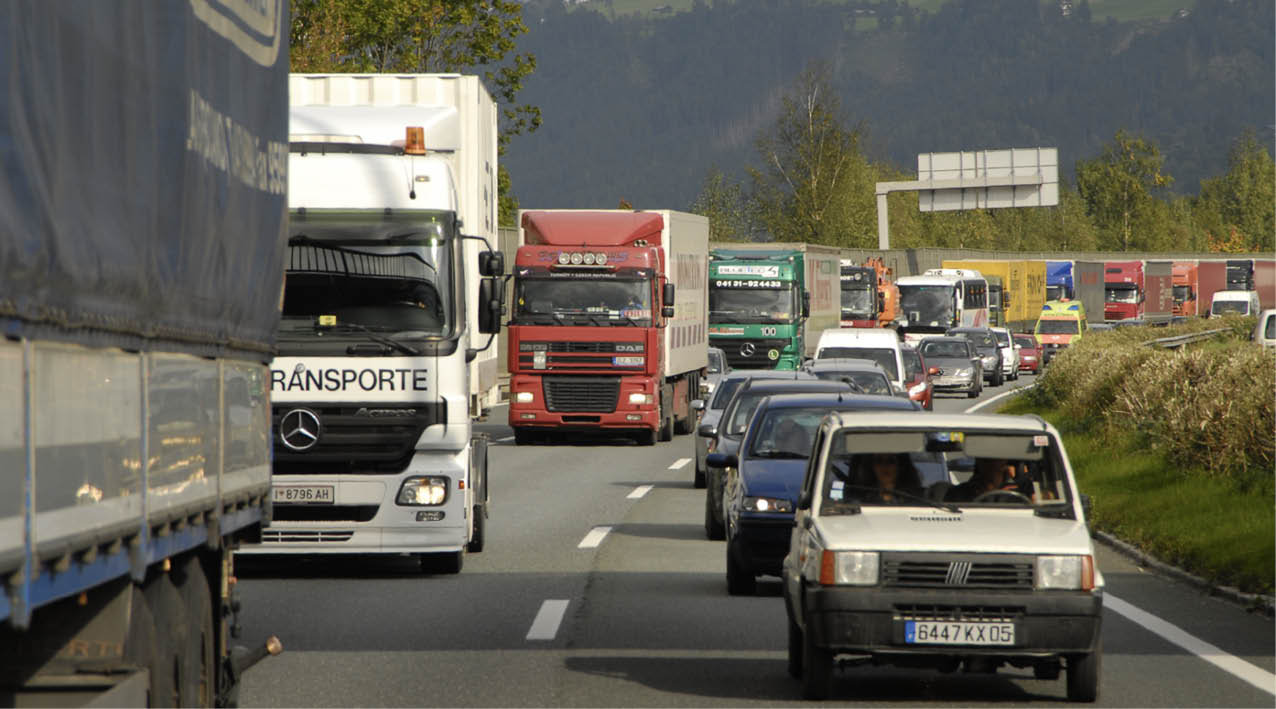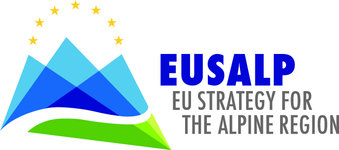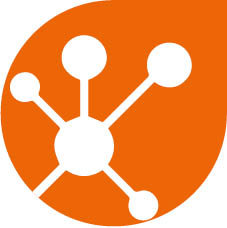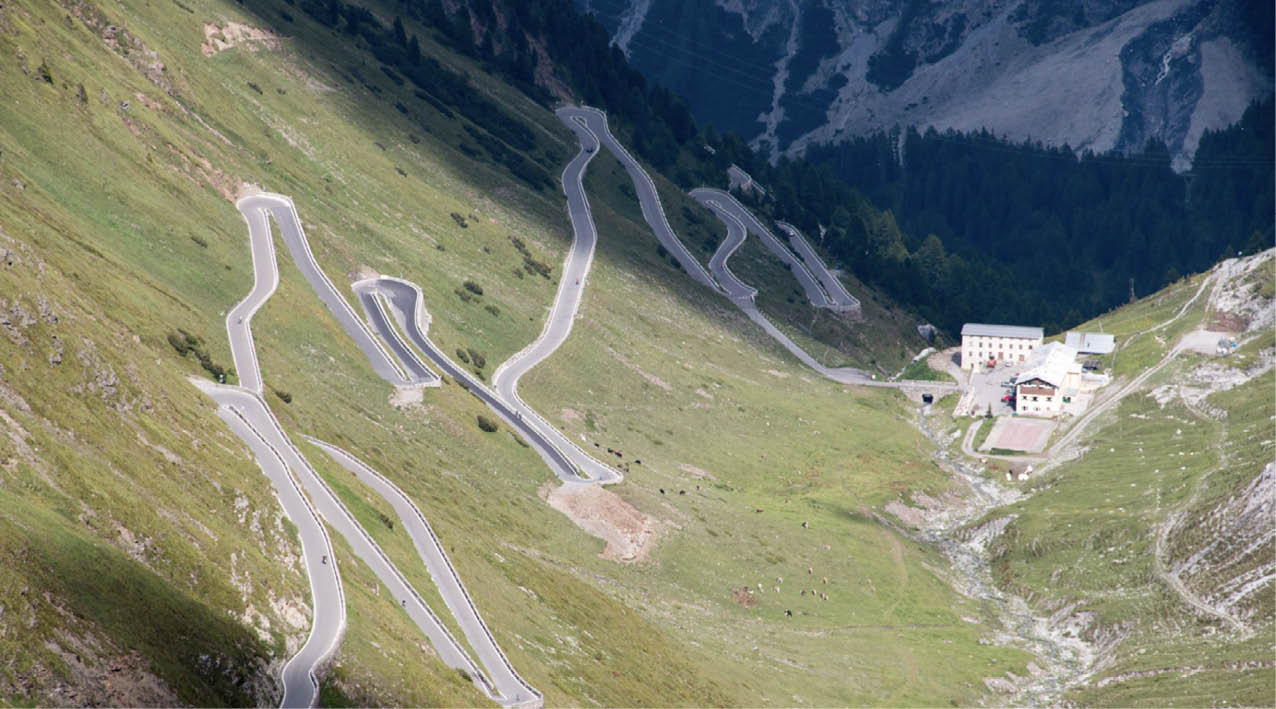conflict 5
#LimitingTrafficPeaks

Congestion in the Alps: smart solutions for an optimised capacity use and for limiting safety and environmental impacts.
Increasing transport volumes do not only lead to environmental problems but also cause congestion, especially on the major Alpine corridors. On some of these motorways, capacities are already fully used during regular working days and come to their limits during peak holiday travelling times. Resulting congestion leads to a further increase of air pollution but also to safety issues, especially on corridors with tunnels. In order to maintain the competitiveness of regional businesses which depend on reliable transport services as well as to avoid unwanted traffic shifts between corridors, the Alpine regions have implemented different measures to deal with congestion.

Switzerland: Phase red on the Gotthard corridor
To guarantee safety in the 16.9 km long Gotthard road tunnel, several innovative safety measures have been introduced at the Gotthard tunnel in response to the tragic fire in the year 2001. The traffic control system includes a “phase red” warning which will be issued once the number of cars entering the Gotthard and neighbouring San Bernardino tunnel exceeds the rate of 1,000 per hour. At this point, Swiss border officials will stop truck drivers from using the routes leading to the tunnels. This measure reduces congestion on the Gotthard motorway which is however only relevant during peak travelling times.
Tyrol: Congestion on the Brenner motorway
Due to comparatively cheap tolls for heavy goods vehicles on the Brenner corridor and cheap fuel prices in Austria (“fuel tourism”) congestion levels caused in particular by road freight transport remains high on motorways in Tyrol. The situation is aggravated during peak travelling times, as the majority of visitors to Tyrol arrive by private car, resulting in severe road congestion on the motorways and at the entrance to the main tourism valleys. This leads to an increase in commuting time for residents and increases transport costs for local businesses. Thus, drastic measures to control the number of HGV are being taken by the regional government, with block admission systems imposed on certain days.
Piedmont: Increase of level crossing closing times on the Alpine Rhine Corridor
The impacts generated by numerous intersections of the railway lines with the local road are already evident. In some particularly busy roads, the possible increase of level crossing closing times, due to increased freight train traffic, may cause heavy traffic road slowdowns and traffic jams with higher local impacts such as acoustic impact and air pollution. It would be necessary to map the points of possible conflict and study the most suitable solutions to solve the problems, acting both at the territorial level (suppression of level crossings and alternative road construction), and at the technological level (reducing the closing time of the level crossings themselves).
Download #5-LimitingTrafficPeaks
iflow.it/eusalp/download/A1025/5-LimitingTrafficPeaks.pdf
iflow.it/eusalp/download/A1025/5-LimitingTrafficPeaks.pdf


